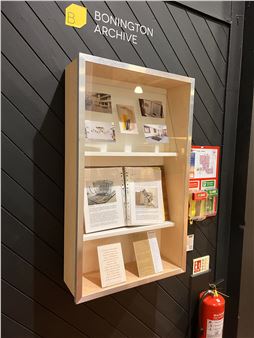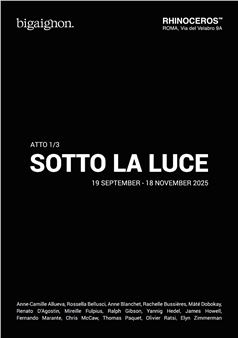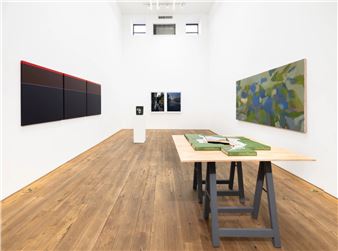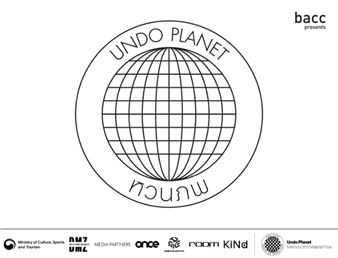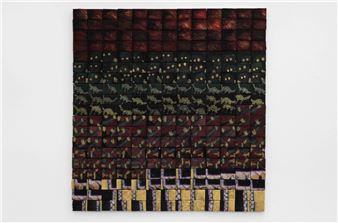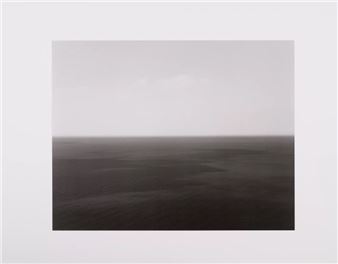Nina Yankowitz: In the Out/Out the In
Throughout a career spanning six decades, Nina Yankowitz (American, b. 1946) has continuously pushed against traditional boundaries, forging a practice that defies singular definition. From loosening canvas from the stretcher and allowing it to drape and fold, to creating immersive multimedia environments that spotlight underrecognized histories, Yankowitz has harnessed an experimental approach to material and discipline to engage themes of feminism, environmentalism, and social justice. Nina Yankowitz: In the Out/Out the In, the artist’s first retrospective, presents the full breadth of her wide-ranging and innovative work and brings long-overdue recognition to her significant contributions to the art world.
Yankowitz began her career in 1960s New York, where she experimented with the material and technical possibilities of canvas, cardboard, paint sprayers, and sewing equipment to create abstract paintings. A founding member of the Heresies Collective (1976–1993), Yankowitz’s early approach to painting was informed by the feminist movement, Process art, and the legacy of Abstract Expressionism. She also participated in the countercultural scenes of Greenwich Village and upstate New York, and her collaborations with the experimental Group 212 Inter-Media Project encouraged her interest in performance and new media. In the following decades, her practice branched out into sculpture, sound and video art, and interactive installations that harness the technology behind social media platforms and video games.
Nina Yankowitz: In the Out/Out the In traces the unconventional trajectories of Yankowitz’s career, beginning with her early unstretched canvases that blur the line between painting, sculpture, and textiles and her Dilated Grain Readings (1973–7), abstract paintings that translate her synesthetic experiences of sound and color into visual forms. Later works include Lips Knees Neck Elbows Chest Rear (1974), an audio work that encourages bodily awareness, and Criss Crossing the Divine (2016), an interactive exploration of the shared beliefs and themes of global religions. The exhibition will also feature major installations like Hell’s Breath (1982), an expansive ceramic tile mural that has not been exhibited since its debut at MoMA PS1, and more recent multimedia works like Closing Bell (2025), a collaboration involving over 30 visual artists, poets, and musicians. Throughout her career, viewer participation and immersive environments have been critical elements of her work, informing, in her words, “everything I do. There’s no beginning, no end. You’re just in it, the whole surround.”
The presentation of Nina Yankowitz: In the Out/Out the In at the Parrish also recognizes Yankowitz’s importance to Long Island’s East End art community. Yankowitz first began visiting the region in the 1970s, where she spent time with fellow artists Hermine Freed, Barbara Kruger, Joan Semmel, Marjorie Strider, and Michelle Stuart. Her experience of the natural environment—specifically the calls of birds and insects—greatly impacted her work in sound art. In 1993, she purchased a home in Sag Harbor and continues to work between the East End and New York.
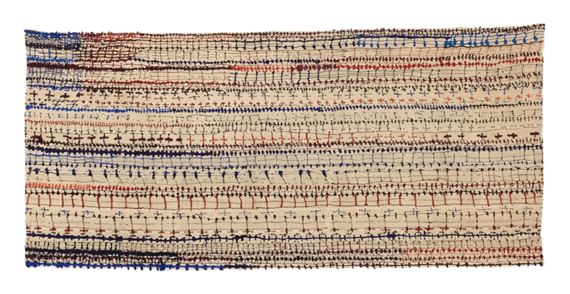
Recommended for you
Throughout a career spanning six decades, Nina Yankowitz (American, b. 1946) has continuously pushed against traditional boundaries, forging a practice that defies singular definition. From loosening canvas from the stretcher and allowing it to drape and fold, to creating immersive multimedia environments that spotlight underrecognized histories, Yankowitz has harnessed an experimental approach to material and discipline to engage themes of feminism, environmentalism, and social justice. Nina Yankowitz: In the Out/Out the In, the artist’s first retrospective, presents the full breadth of her wide-ranging and innovative work and brings long-overdue recognition to her significant contributions to the art world.
Yankowitz began her career in 1960s New York, where she experimented with the material and technical possibilities of canvas, cardboard, paint sprayers, and sewing equipment to create abstract paintings. A founding member of the Heresies Collective (1976–1993), Yankowitz’s early approach to painting was informed by the feminist movement, Process art, and the legacy of Abstract Expressionism. She also participated in the countercultural scenes of Greenwich Village and upstate New York, and her collaborations with the experimental Group 212 Inter-Media Project encouraged her interest in performance and new media. In the following decades, her practice branched out into sculpture, sound and video art, and interactive installations that harness the technology behind social media platforms and video games.
Nina Yankowitz: In the Out/Out the In traces the unconventional trajectories of Yankowitz’s career, beginning with her early unstretched canvases that blur the line between painting, sculpture, and textiles and her Dilated Grain Readings (1973–7), abstract paintings that translate her synesthetic experiences of sound and color into visual forms. Later works include Lips Knees Neck Elbows Chest Rear (1974), an audio work that encourages bodily awareness, and Criss Crossing the Divine (2016), an interactive exploration of the shared beliefs and themes of global religions. The exhibition will also feature major installations like Hell’s Breath (1982), an expansive ceramic tile mural that has not been exhibited since its debut at MoMA PS1, and more recent multimedia works like Closing Bell (2025), a collaboration involving over 30 visual artists, poets, and musicians. Throughout her career, viewer participation and immersive environments have been critical elements of her work, informing, in her words, “everything I do. There’s no beginning, no end. You’re just in it, the whole surround.”
The presentation of Nina Yankowitz: In the Out/Out the In at the Parrish also recognizes Yankowitz’s importance to Long Island’s East End art community. Yankowitz first began visiting the region in the 1970s, where she spent time with fellow artists Hermine Freed, Barbara Kruger, Joan Semmel, Marjorie Strider, and Michelle Stuart. Her experience of the natural environment—specifically the calls of birds and insects—greatly impacted her work in sound art. In 1993, she purchased a home in Sag Harbor and continues to work between the East End and New York.

 ARTISTS
ARTISTS







